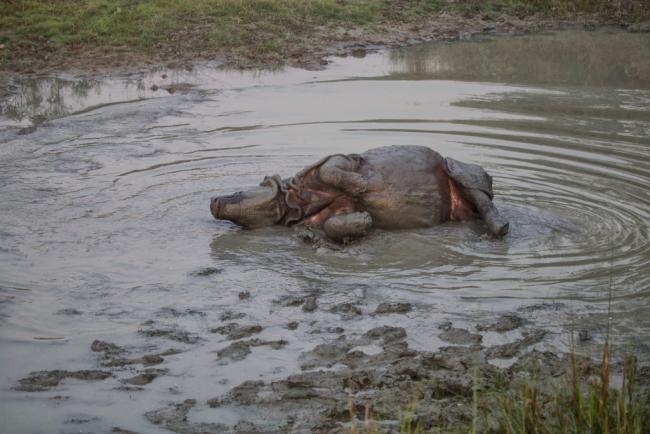Articles Menu

October 13, 2022
TORONTO, 13 October 2022 – Monitored wildlife populations — mammals, birds, amphibians, reptiles and fish — have seen a devastating 69 per cent drop on average since 1970 according to WWF’s Living Planet Report (LPR) 2022. The report highlights the stark outlook of the state of nature and urgently warns governments, businesses and the public to take transformative action to reverse the destruction of biodiversity.
The LPR found that populations of species in North America declined by an average of 20 per cent between 1970 and 2018, and while this decline is not as steep as other regions, it does not mean that Canada is safe from catastrophic losses. In fact, the Living Planet Report Canada 2020 showed that species of global conservation concern — assessed as threatened on the IUCN Red List — declined in Canada by 42%, on average, from 1970–2016.
With its biggest dataset yet, featuring almost 32,000 populations of 5,230 species, the Living Planet Index (LPI), provided within the report by ZSL (Zoological Society of London), reveals that monitored vertebrate wildlife populations are plummeting at a particularly staggering rate within tropical regions.
The biggest declines globally were seen in monitored freshwater populations, which have fallen by an average of 83 per cent. Habitat loss and barriers to migration routes are responsible for about half of the threats to monitored migratory fish species.
“The Living Planet Report contains shocking figures directly related to our interlinked climate and biodiversity crises and in response we must see transformative systems change if we’re to halt and reverse nature loss and secure a flourishing future for people and nature,” said Dr Marco Lambertini, Director General of WWF International. “Government leaders must step up at COP15. The world is watching.”
The report comes at a pivotal time. Senior government leaders from around the world are due to meet at the 15th Conference of Parties to the Convention of Biological Diversity (CBD COP15) this December in Montreal for a once-in-a-decade opportunity to course-correct for the sake of people and the planet. WWF is advocating for leaders to commit to a ‘Paris-style’ agreement capable of reversing biodiversity loss to secure a nature-positive world by 2030.
“The findings of the LPR show the urgency with which we need to act as we approach CBD COP15 in Montreal. If we are going to reverse the dramatic species declines shown in this report, it’s important that Canada recognizes the role protected areas can play in helping us meet global biodiversity targets. What’s more is that when protected areas are established in a way that considers Indigenous rights, biodiversity and climate benefits at the same time, they can help us curb both biodiversity loss and the effects of climate change in a just and equitable way,” says Megan Leslie, WWF-Canada’s President and CEO.
Dr Andrew Terry, Director of Conservation and Policy at ZSL, said: “The Living Planet Index highlights how we have cut away the very foundation of life and the situation continues to worsen. Half of the global economy and billions of people are directly reliant on nature. Preventing further biodiversity loss and restoring vital ecosystems has to be at the top of global agendas to tackle the mounting climate, environmental and public health crises.”
Around the world, the report indicates that the main drivers of wildlife population decline are habitat degradation and loss, exploitation, the introduction of invasive species, pollution, climate change and disease.
The LPR report makes clear that delivering a nature-positive future will not be possible without recognising and respecting the rights, governance, and conservation leadership of Indigenous Peoples and local communities around the world.
For further information and interview requests, please contact:
media@wwfcanada.org
Notes to Editors:
World Wildlife Fund Canada
WWF-Canada is committed to equitable and effective conservation actions that restore nature, reverse wildlife loss and fight climate change. We draw on scientific analysis and Indigenous guidance to ensure all our efforts connect to a single goal: a future where wildlife, nature and people thrive. For more information visit wwf.ca.
WWF
WWF is an independent conservation organization, with over 30 million followers and a global network active in nearly 100 countries. Our mission is to stop the degradation of the planet’s natural environment and to build a future in which people live in harmony with nature, by conserving the world’s biological diversity, ensuring that the use of renewable natural resources is sustainable, and promoting the reduction of pollution and wasteful consumption. Visit panda.org/news for the latest news and media resources; follow us on Twitter @WWF_media